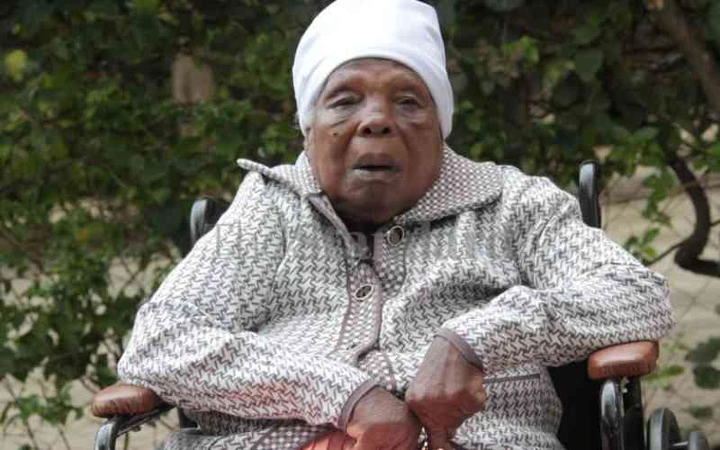All along her life, the fallen Mukami Kimathi had only one plea to the government, have her fallen husband and Mau Mau fighter Dedan Kimathi’s remains relocated from Kamiti Prisons for a decent burial at his home in Kinangop.
However, it is a wish that Mukami breathed her last on Thursday (yesterday) night with having it fulfilled. It may be one of the greatest regrets that Ms. Mukami may have to carry to her grave, as she always feared dying before seeing the exact place where Dedan Kimathi was buried.
The late Mukami reportedly developed some breathing difficulties where her family rushed her to a Nairobi facility. Efforts by medics to save her life proved futile as she died shortly after her arrival at the hospital.
“I do not want to die before being shown the exact place where my husband was buried. I want to see the remains of my Kimathi before I go. I do not have long to live and this matter has been a thorn in my flesh,” Mukami was quoted pleading in the past.
The only information that Mukami alongside other family members had in regard to KImathi was that he was buried somewhere in Kamiti Maximum Prison where he was taken after his arrest. Dedan Kimathi Waciuri was born on 31 October 1920. He was hanged on 18 February 1957.
He was a leader of the Mau Mau movement which led an armed military struggle known as the Mau Mau uprising against the British colonial government in Kenya in the 1950s. At the age of fifteen, he joined the local primary school, Karuna-ini, where he perfected his English skills.
He would later use those language skills to write extensively before and during the uprising. He was a Debate Club member in his school. He was deeply religious and carried a Bible regularly. He worked for the forest department collecting tree seeds to help him foot his school bill.
He later joined Tumutumu CSM School for his secondary learning, but dropped due to poverty. Notable was his enlisting with the army to fight in the Second World War in 1941. However, in 1944, he was expelled for misconduct. In 1946, he became a member of the Kenya African Union (KAU).
In 1949, he started teaching at his old school Tumutumu, but left the job within two years. In 1956, he was finally arrested with one of his wives, Ms. Wambui. He was sentenced to death by a court presided by Chief Justice Sir Kenneth O’Connor, while he was in a hospital bed at the General Hospital Nyeri.
In the early morning of February 18, 1957 he was reportedly executed by the colonial regime. The hanging reportedly took place at the Kamiti Maximum Security Prison. The operation to capture or kill Dedan Kimathi was undertaken on the understanding that only by his removal from the active theater could the matter of the Rebellion be finally laid to rest.
Mau Mau no longer presented any particular threat to outside society, and in any case been superseded by the mainstream political process which was heading slowly but surely in the direction of majority rule, as it was throughout most of Africa, but so long as Kimathi remained at large the rebellion was active.
The process to capture or kill Dedan Kimathi started with the capture of a pair of middle ranking fighters in the Aberdare forest in December 1955, in the broad vicinity of where Kimathi was known to be hiding. At that time it was estimated that there were fewer than 1500 active fighters remaining in the forest aligned to a handful of key leaders.
Kimathi himself commanded a large following of extremely committed and ‘hard core’ fighters, with an inner circle of bodyguards whose loyalty was unimpeachable.
by: nziokajustin

